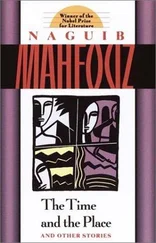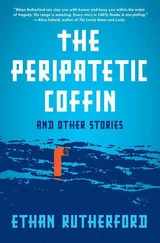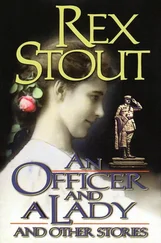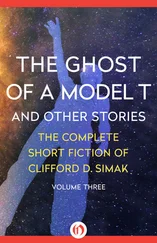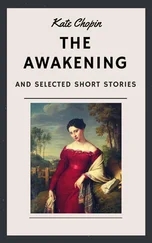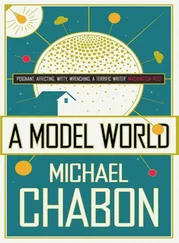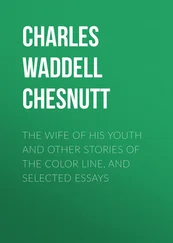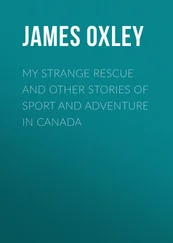Michael Chabon - A Model World And Other Stories
Здесь есть возможность читать онлайн «Michael Chabon - A Model World And Other Stories» — ознакомительный отрывок электронной книги совершенно бесплатно, а после прочтения отрывка купить полную версию. В некоторых случаях можно слушать аудио, скачать через торрент в формате fb2 и присутствует краткое содержание. Год выпуска: 2011, Издательство: Open Road Media, Жанр: Современная проза, на английском языке. Описание произведения, (предисловие) а так же отзывы посетителей доступны на портале библиотеки ЛибКат.
- Название:A Model World And Other Stories
- Автор:
- Издательство:Open Road Media
- Жанр:
- Год:2011
- ISBN:нет данных
- Рейтинг книги:5 / 5. Голосов: 1
-
Избранное:Добавить в избранное
- Отзывы:
-
Ваша оценка:
- 100
- 1
- 2
- 3
- 4
- 5
A Model World And Other Stories: краткое содержание, описание и аннотация
Предлагаем к чтению аннотацию, описание, краткое содержание или предисловие (зависит от того, что написал сам автор книги «A Model World And Other Stories»). Если вы не нашли необходимую информацию о книге — напишите в комментариях, мы постараемся отыскать её.
A Model World And Other Stories — читать онлайн ознакомительный отрывок
Ниже представлен текст книги, разбитый по страницам. Система сохранения места последней прочитанной страницы, позволяет с удобством читать онлайн бесплатно книгу «A Model World And Other Stories», без необходимости каждый раз заново искать на чём Вы остановились. Поставьте закладку, и сможете в любой момент перейти на страницу, на которой закончили чтение.
Интервал:
Закладка:
Every night before he switched off the lamp, and every morning when he awoke, he took out the collection of photographs of Eleanor Parnell he had pilfered from his mother’s album and looked deeply into each of them, trying to speak to Eleanor with the telepathy of love. In his freshman-English class they arrived at the writing of poetry, and Nathan, startled into action, composed haiku, limericks, odes, and cinquains to Eleanor, as well as an acrostic sonnet, the first letters of whose lines daringly spelled out E-L-E-A-N-O-R P-A-R-N-E-L–L; whenever, in these poems, he referred to her directly, he called her Jennifer — like “Eleanor” a dactyl.
On the Saturday before the start of his freshman year of high school, as Nathan wandered home through the woods from Edward’s house, trying to walk erect, he saw Eleanor under the tulip poplars, in a battered pith helmet, wildly shooting down wasps’ nests with the pistol nozzle of a garden hose. Great golden, malevolent wasps had been something of a problem all summer, but after all the rain in July they proliferated and flew into the houses at suppertime.
“Is it working?” called Nathan, trotting toward her. One of the things he loved about Eleanor was her inventiveness, however doomed.
“Oh, no,” Eleanor said. As soon as she glimpsed Nathan she began to laugh, and the stream of water shivered and fell to the ground. Her laugh, which was the first thing Nathan remembered noticing about Eleanor, had always been odd — raucous and dark, like a cartoon magpie’s or spider’s — but lately it had come for Nathan to be invested with the darkness of sex and the raucousness of having survived misfortune. She had been in the sun too long, and her face was bright red. “No one was supposed to see me doing this. Do you think this is a bad idea? They look pretty pissed off. Major Ray thought this wasn’t a good idea.” Major Ray did not appreciate Eleanor.
“I disagree,” said Nathan, gazing up at the treetops, where the wasps had hung their cities of paper. A dense golden cloud of wasps wavered around them. “There’s a lot less of them now.”
“Do you think so?” said Eleanor. She took off her hat and stared upward. Her bangs clung to her damp, sunburned forehead.
“Yes,” said Nathan. “I guess you drowned them. Or maybe the impact kills them. Of the water.” The cloud of wasps widened and descended. “Uh, Eleanor. Could I — Maybe I should try it.”
“All right,” said Eleanor. She handed him the squirting, hissing nozzle and then, solemnly, the pith helmet, all the while keeping an eye on the insects and biting her lip. Almost immediately Nathan got the feeling that a blanket, or a net, was about to fall on him. Eleanor jumped backward with a cry, and Nathan was left to fight off the wasps with his lunatic weapon, which he did for fifteen valiant seconds. Then he ran, with Eleanor behind him. He tore around the front of the Parnells’ house, crossed the front lawn, and ran out onto Les Adieux Circle. At the center of the cul-de-sac lay a round patch of grass, planted with a single, frail oak tree. No one on the street knew who was supposed to mow this island and so it generally went unmown, and, according to the local children’s legend, it harbored a family of field rats. He and Eleanor fell into the weeds, and Nathan’s eyeglasses, which were photosensitive and had darkened in the afternoon sunshine, flew from his face. Dazzled, frightened, he rolled laughing in her rosy arms, and they embraced like a couple of fortunate castaways. Then, his heart pounding, he scrambled to his knees and sought the comforting weight, the protection of his glasses.
Of the four stings that Nathan received, three were on his thigh and one was on his shoulder. Eleanor took him into the house, up the stairs, and into the bedroom, where blue laundry lay folded on the big bed and where Eleanor’s gold trophies, like so many miniature Mormon temples, sat shining dimly in their cabinet. Then she led him into the bathroom, lowered the lid onto the toilet, and sat him down.
“Roll up your cutoffs, Nathan,” she said. She found a box of baking soda and mixed a little with some tap water in the plastic bathroom cup. Nathan pulled upward on the frazzled leg of his shorts and tried to keep from crying. She knelt beside him to daub his pale, fat, blistered thigh. Nathan flinched, but the paste was cool, and he was overcome with gratitude. He didn’t know what to do, and so he stared at the parting of her hair, at Eleanor’s miraculous scalp, white and fine as polished wood.
“I guess Major Ray was right,” said Eleanor. “It wasn’t such a hot idea.” She cackled nervously, and it was a relief to Nathan to see that she also felt that something weird was happening — such a relief that he began to cry, although he hated crying more than anything else in the world.
“Oh, Jesus, does it hurt, honey?” Eleanor said. “I’m sorry, I’m sorry. Does it hurt?”
This expression of concern made Nathan inordinately happy, and he tried to tell her it didn’t hurt a bit, but he was too miserable to speak. He was frightened by the zeal of his crying, but it felt too good to stop. So he covered his face and hee-hawed like a child.
Eleanor stopped ministering to his wasp stings and sat back on her heels, regarding Nathan. A different kind of concern entered her face, and all at once she looked very sad. “What’s the matter, Nathan?” she said.
But Nathan told no one, not even Edward, to whom he generally confided all his ludicrous amours. The two boys had supported and amused one another through a long series of fanciful loves, but until now the objects of their affections had always been unattainable, unlikely, and laughable: a prom queen, a postwoman, the earth-sciences teacher Miss Patocki, or the disturbing Sabina McFay, Edward’s nineteen-year-old neighbor, who was half Vietnamese and rode a motorcycle. Not so Eleanor Parnell; she was unattainable and farfetched, but she was not at all laughable, and Nathan said nothing to Edward about her.
When he learned, from his mother, that he had been invited to the Parnells’ Halloween party, he was flattered and struck with fear, and during the abject, optimistic weeks that followed he resolved to declare his feelings to Eleanor Parnell once and for all at this party. For ten days his head was filled with whispered, intricate repartee.
At dusk on Halloween, just as the youngest and most carefully chaperoned of the demons and nurses and mice were beginning to make their rounds, Nathan and Edward were standing in the living room of the Shapiros’ house, drawing pictures with colored pencils onto Mrs. Shapiro’s arms, back, and shoulders. Nathan’s mother sat on a horsehide ottoman, in blue fishnet tights, blue high-heeled shoes, and a strapless Popsicle-blue bathing suit, laughing and complaining that the boys were pressing too hard as they drew anchors, hearts, thunderbolts, and snakes across her skin. The boys dipped the tips of the pencils into a jar of water, which made the colors run rich. As the drawings began to predominate over unmarked patches of skin, Nathan put his crimson pencil down and stepped back, as if to admire their handiwork.
“I think that’s enough tattoos, Mom,” he said.
“Is that so?” said his mother.
“Personally,” said Edward, inspecting her, “I think a big, you know, triumphant eagle, with a javelin in its claw, right here under your neck, would look really cool, Mrs. Shapiro. Rose.”
“That sounds fine, Edward,” said Mrs. Shapiro.
Nathan looked at his friend, who began to paint a gray, screaming eagle. Nothing about his voice or studious little face indicated that he felt anything but the enthusiasm of art. As a matter of fact, his drawings were much better than Nathan’s — bold, well drafted, easily recognizable; the snakes Nathan had drawn looked kind of like sewing needles, or flattened teaspoons.
Читать дальшеИнтервал:
Закладка:
Похожие книги на «A Model World And Other Stories»
Представляем Вашему вниманию похожие книги на «A Model World And Other Stories» списком для выбора. Мы отобрали схожую по названию и смыслу литературу в надежде предоставить читателям больше вариантов отыскать новые, интересные, ещё непрочитанные произведения.
Обсуждение, отзывы о книге «A Model World And Other Stories» и просто собственные мнения читателей. Оставьте ваши комментарии, напишите, что Вы думаете о произведении, его смысле или главных героях. Укажите что конкретно понравилось, а что нет, и почему Вы так считаете.

